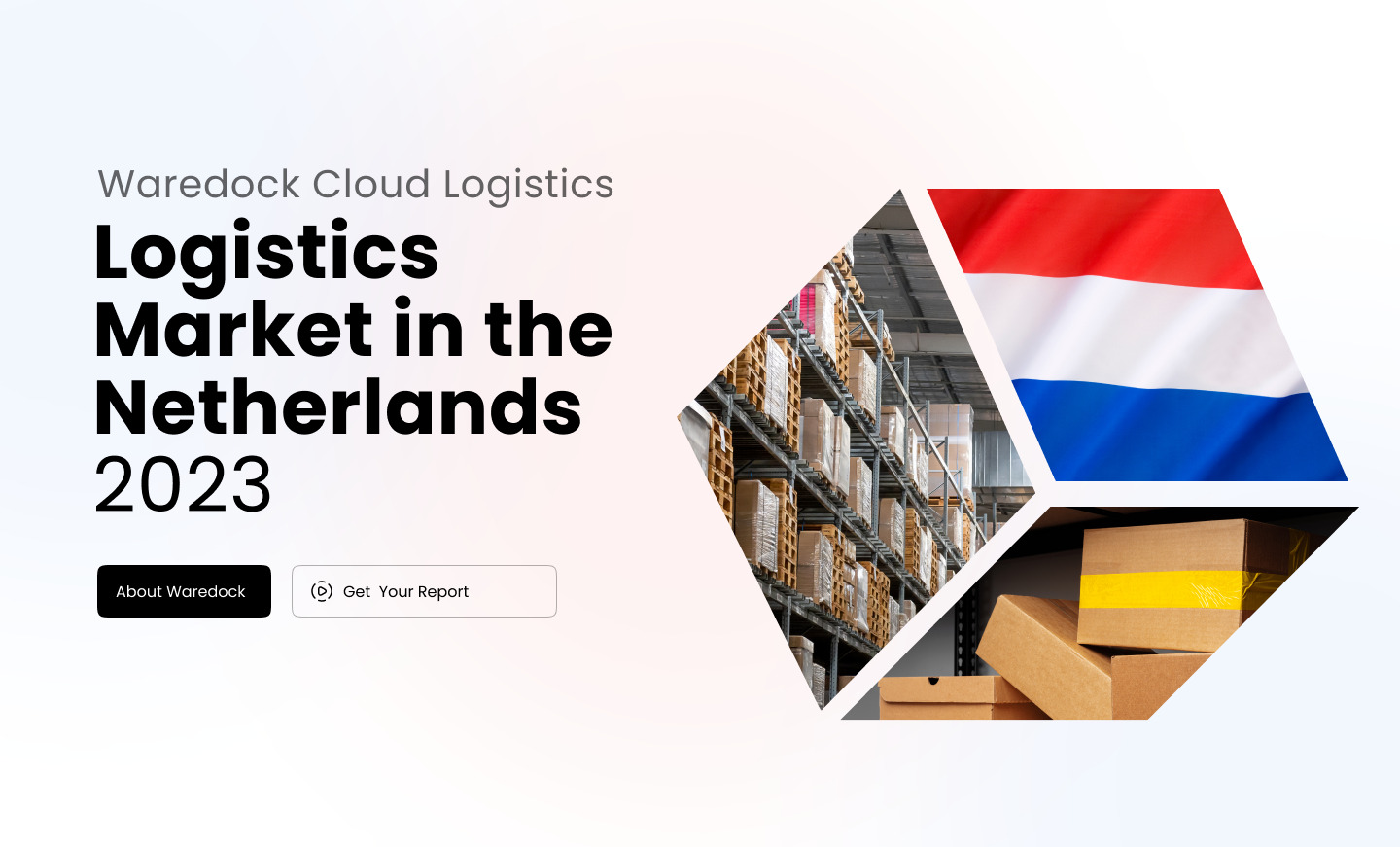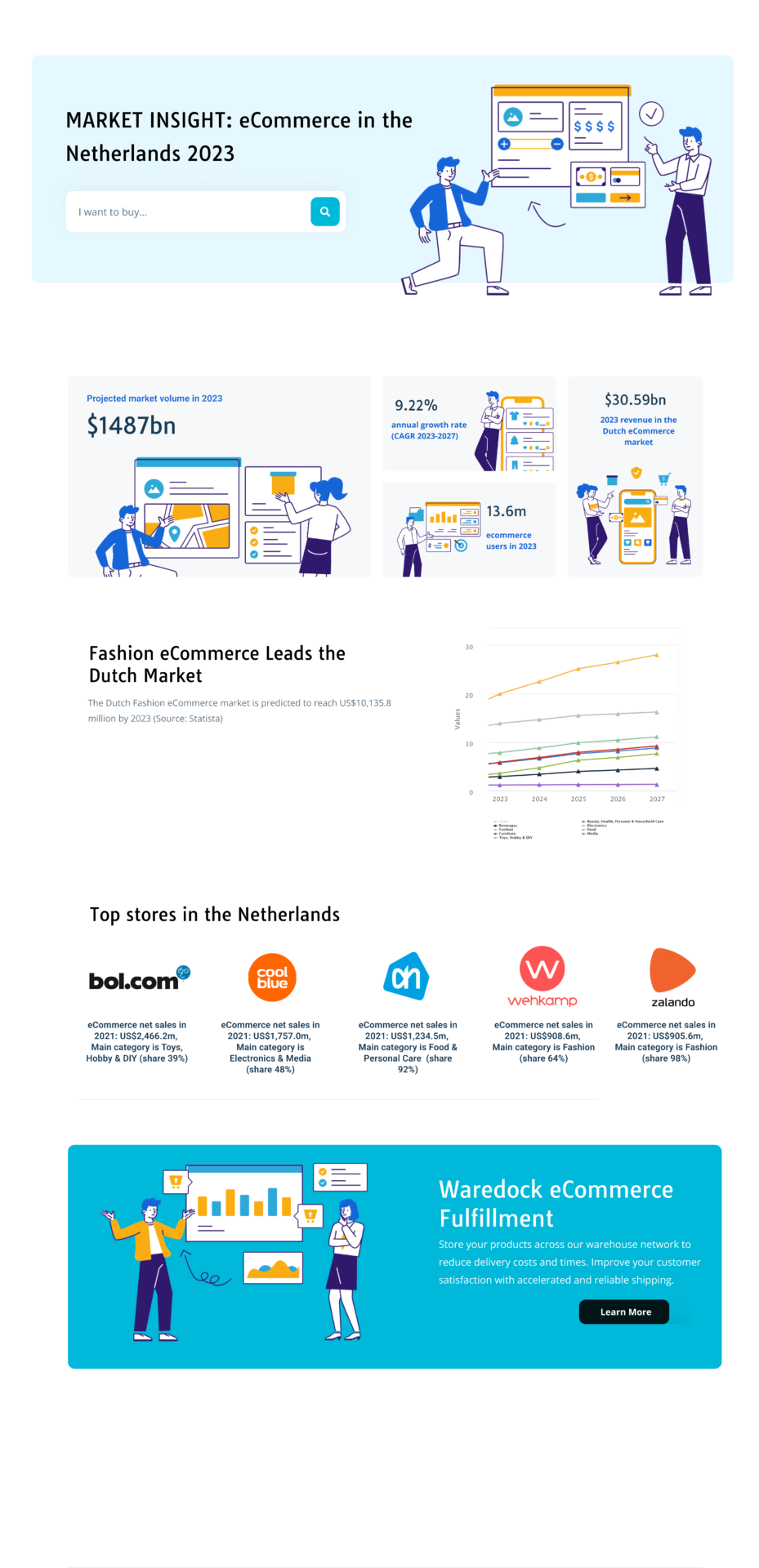Dutch Logistics Market Overview
The Netherlands can look back on a long history as a trading nation. For centuries, imports and exports have shaped the kingdom’s economic activities and laid the foundation for its current position as one of the most important European logistics markets. With Europe’s largest seaport in Rotterdam, one of the major Airports in Europe and its central location, the Netherlands form the logistical heart of Europe. But how will the country be able to maintain its status as a top market in the future? Learn all about the developments on the Dutch logistics market here.
Logistics sector accounts for 9% of GDP and affects the whole Dutch economy. The Dutch logistics market is in the growing stage, being driven by sophisticated and reliable transport infrastructure, increasing inflow of investment, and government initiatives. There are several players in the Netherlands Logistics market some of which include Deutsche Post DHL Group, DSV Panalpina, Kuehne + Nagel Logistics B.V.The Netherlands is frequently referred to as the “Gateway to Europe.” The country is a major player in the European freight landscape, and it is regarded as one of the most important logistics hubs for goods entering and leaving the European Union.
E-commerce market is booming as the number of internet users has increased; e-commerce usage in the Netherlands is the highest in the EU at 84%, indicating a massive opportunity to convert ‘browsers’ into sales. E-commerce growth has resulted in high demand for logistics space and with the sales opportunities available, this growth can be expected to continue.
Increase in E-commerce due to digitalization
- According to the Digital Economic and Society Index, the Netherlands ranked 4th out of 27 EU Member States in 2021, retaining its position as one of the top performers in digitalization in Europe. The country has widespread adoption of digital technologies across businesses and use of online services, and high levels of basic and advanced digital skills.
- The country initially adopted a digitalization strategy in 2018 and further updated it in 2019, 2020, and 2021 to maintain its integrity and create a strong foundation for its digital ambition. The country has prioritized and focused its efforts on artificial intelligence, responsible use of data, digital governance, digital connectivity, digital security and resilience, and digital skills.
- According to the integration of digital technology into business activities, the Netherlands ranks 5th among EU countries as at least 75% of SMEs and 95% of large enterprises in the country have a basic level of digital integration.
- With the adoption of the National Growth Fund that reserves EUR 20 billion for infrastructure, innovation, and R&D in digital technologies, with sizeable portions allocated to AI, health data infrastructure, and quantum technology, the country’s digitalization and digital infrastructure are said to increase in following years. The increase in digitalization is expected to directly influence the growth of e-commerce vendors in a positive manner.
Fashion Segment Accounts for Significant Share
- Increasing consumer need and demand for personalized solutions for fashion and clothing is increasing the adoption of e-commerce in the sector. Identifying a broad range of key consumer needs has improved e-commerce execution in the product category.
- The underlying behavior of customers, motivation, and attitude toward the products in the product category drives the adoption of e-commerce. Further, an increasing level of comfort for the purchase of fashion and clothing products suggests strong growth in the adoption of e-commerce in the segment.
- Many clothing brands and retailers in the country have adopted e-commerce to broaden the digital ecosystem, which leads to new revenue streams. Most of the fashion segment growth is forecasted to increase due to pureplay digital retailers.
- Further, the focus of investments in innovation for digital touchpoints, in-store customer engagement, and e-commerce upskilling enables businesses to adopt the Go-to-market approach and partner with pureplay online retailers such as Amazon for business growth.
Competitive Landscape
The level of rivalry in the Netherlands’ e-commerce market is moderate due to the presence of a large number of market players. The number of local and global brands in the Netherlands’ e-commerce market is increasing, which may lead to high competition in the market.
- February 2022 – Smartmile has partnered with DHL Express in the Netherlands for a pilot project that integrates second courier service companies for a shared and open delivery infrastructure.
- January 2022 – Ochama, a subsidiary of Chinese e-commerce giant JD.com has opened a webshop with two robot pickup points. These stores allow customers to purchase both food and nonfood items using an online portal and allow their customers to collect their online orders on the same day.
A Circular Economy in the Netherlands
Waste will disappear in this circular economy. Waste will be a new raw material. Soon, virtually everything that we use, will later be reused repeatedly. In the Netherlands, the efforts are definitely not starting from scratch. For example, the recycling of plastic packaging has almost doubled in six years’ time, and in 2014 we were already recycling 82% of our paper and cardboard. For metals, the level is even 94%. Moreover, many municipalities have worked hard to achieve spectacular reductions in residual waste. The business community too is actively working on realising a circular economy. For instance, the Dutch clothing brand G-Star Raw uses recycled materials to produce its jeans, and FrieslandCampina uses manure to generate energy.
To accelerate the transition to a circular economy, the government plans to draw up “transition agendas” in which the five following chains and sectors have the highest priority: biomass and food, plastics, manufacturing, construction, and consumer goods. We, as the government, will support these priority chains and sectors so that by 2050 they will only be using sustainably produced, renewable or generally available raw materials, and be generating as little residual waste as possible. Another of our aims is for products that reach their end of life to undergo high-quality recycling and be used to make new products. Smart return and collection systems will be set up to this end. We will do everything we can to ensure that consumers, businesses and authorities handle their products with due care, also when they reach their end of life. In this way, end-of-life products and materials remain invaluable in our economy.
Cashing in on Brexit
When the United Kingdom left the European Union and joined a period of transition, with a lack of certainty about the economic new relation and the effect on international business exists. Because of Brexit, an increasing number of businesses are relocating to the Netherlands. This gave the opportunity for the Netherlands to make significant use of its intermodal network to move all freight that crosses its borders, with a large share of imports passing through the Port of Rotterdam or Amsterdam Airport Schiphol for distribution all through the EU.
Logistics Space Rent Levels Increase
The limited supply has led to higher rents across the country in the space of just one year. Rent levels increased by 10-15%. The biggest rent increases were seen in the regions of Amsterdam, Eindhoven, Zuid-Limburg and Tilburg-Waalwijk. This trend is expected to continue through the first half of 2023, according to CBRE.
Technological and Skill Deterrents
In the Netherlands, automation of processes is still in the embryonic stage and non-standardization in the industry due to its fragmentation further slows down the progress. Acceptance and adoption of technological advancements like RFID, tracking, warehouse management system, etc. can resolve the issues between domain requirement and IT. Besides this, there is lack of quality workforce in this sector, and the available skill set needs to be upgraded urgently.
eCommerce revenue in 2023 in the Netherlands
The Netherlands is the 17th largest market for eCommerce with a predicted revenue of US$30,585.8 million by 2023, placing it ahead of Turkey. Revenue is expected to show a compound annual growth rate (CAGR 2023-2027) of 9.2%, resulting in a projected market volume of US$43,533.9 million by 2027. With an expected increase of 17.0% in 2023, the Dutch eCommerce market contributed to the worldwide growth rate of 17.0% in 2023. Like in the Netherlands, global eCommerce sales are expected to increase over the next years.
Fashion is the largest market and accounts for 32.8% of the Dutch eCommerce revenue. It is followed by Food & Personal Care with 20.1%, Electronics & Media with 17.2%, Furniture & Appliances with 17.1%, and Toys, Hobby & DIY with the remaining 12.9%.
Top 5 Online stores in the Netherlands
The biggest player in the Dutch eCommerce market is bol.com. The store had a revenue of US$2,466.2 million in 2021. bol.com is followed by coolblue.nl and ah.nl as the second- and third-largest stores with US$1,757.0 million and US$1,234.5 million, respectively. Altogether, the top three stores account for 30.1% of the top 100 online stores’ revenue in the Netherlands. Store rankings include every store that generates revenue in the Netherlands. These stores can either have a national focus and only sell in their main country or operate on a global scale.
Waredock in the Netherlands
Waredock offers fulfillment and warehousing in Netherlands. Our vision at Waredock is a geographically dispersed fulfillment and warehouse infrastructure that is enabled by data insights across the supply chain. We are working with Dutch 3PL companies, property owners, businesses small and large in a range of industries. We help businesses get greater coverage in more markets. Our network includes every warehouse type, with the certifications and designations to store any specialized product. And, we’ll provide picking, kitting, shipment consolidation, and more. Get started today!



